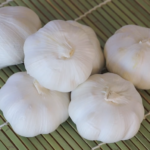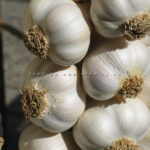Garlic Press Tool is incredibly convenient, but some hesitate to use it, thinking it’s difficult to clean. That’s not entirely true. Avoid these common mistakes when pressing garlic, and you’ll find the task much more enjoyable.
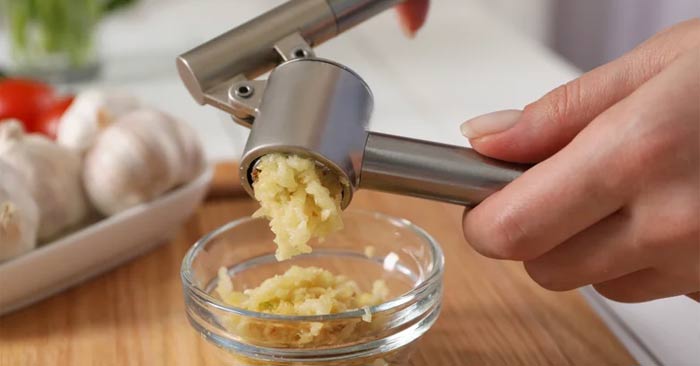
Common Mistakes When Pressing Garlic
Using the Wrong Tool for the Recipe
Choosing the right tool is crucial in cooking. Pressing garlic isn’t always the best option. While a garlic press saves time, using it incorrectly can ruin your dish. Pressed garlic is more intense, releases more juice and oil, and cooks or burns faster. In stir-fries or quick sautéing, garlic can go from golden to bitter in seconds. If your recipe calls for minced garlic in a hot pan, set the garlic press aside and use a knife instead.
Texture and flavor intensity matter too. Some dishes with few ingredients won’t pair well with pressed garlic. The same goes for light sauces—don’t use pressed garlic to overpower them. For sauces needing a subtle garlic flavor, minced garlic works better than pressed.
However, when you want a bold, evenly distributed garlic flavor, use a garlic press. It’s perfect for blending into salad dressings, mayonnaise, aioli, hummus, and pesto. Pressed garlic also works well in slow-cooked dishes. After long simmering, you’ll get a rich yet mellow garlic flavor.
Pressing Too Much Garlic at Once
Too much of anything can be detrimental, and that applies to garlic presses too. Overloading the press with too much garlic at once can make the task difficult. When pressing garlic, pay attention to the quantity to match your dish.
Recipes usually specify the amount of garlic and how to prepare it. But if you’re adjusting flavors, not using a recipe, or creating your own, be cautious. Pressed garlic is very potent, so you may need less than you think.
When pressing, crushing, or mincing garlic, you break open countless tiny cells, releasing allicin, which gives garlic its strong flavor and aroma. If you only slice garlic into large pieces, you break fewer cell membranes—less allicin and a milder flavor.
This means a whole, unbroken garlic clove will have a mild flavor. Sliced garlic will have a moderate flavor. Minced garlic will be more intense. And pressed garlic will have the strongest flavor, more than a dozen cooked whole cloves! So, when using a garlic press, consider pressing gently. Don’t let the garlic overpower your dish.
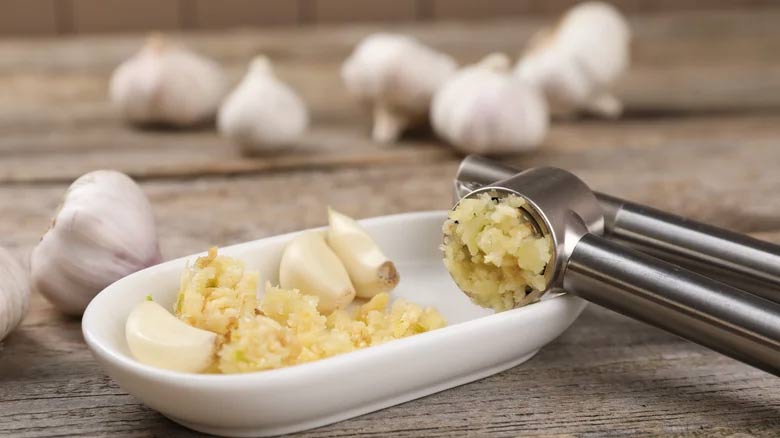
Not Knowing When to Peel Garlic
Even if your garlic press claims it can handle unpeeled cloves, it’s best to peel them yourself. Sometimes, pressing unpeeled garlic can be more effort. If you’re handling a lot of garlic or don’t have the grip strength of a rock climber, peeling can make pressing much easier.
Even if you skip peeling, remove excess skin before pressing. This prevents clogging and ensures the full garlic flavor is preserved.
Skipping Olive Oil or Cooking Spray
A simple trick makes using a garlic press easier: cooking oil. Before adding the garlic, spray a bit of olive oil into the press’s chamber. If you don’t have olive oil spray, use your finger to apply a small amount. Butter, canola oil, or another neutral oil with little to no flavor also works.
After lubricating the press, add peeled or unpeeled garlic and press gently. The oil won’t affect the garlic’s flavor. Just a light coating ensures the garlic slides out easily while retaining its pungency.
This oil trick is also helpful for cleaning. No more struggling to remove garlic residue from tiny holes. Instead, just wash it with warm, soapy water.
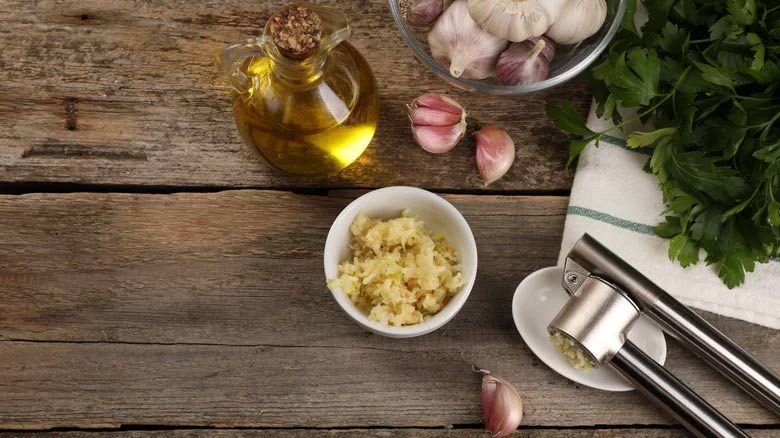
Ignoring the Right Timing
Timing is everything with garlic. Pressed garlic tends to turn bitter if left too long. Once tiny garlic pieces are exposed to air, chemical reactions start quickly. So, press garlic right when you’re ready to use it.
However, this advice changes slightly with acid. Acidic ingredients like lemon juice or vinegar can neutralize allicin, the compound giving garlic its distinctive flavor. Pressing garlic activates allicin, but acid stops it. For example, in a vinegar-based sauce recipe, let pressed garlic sit briefly to interact with air before mixing with vinegar and other ingredients. Just a few seconds ensures the garlic flavor permeates the final sauce.

























